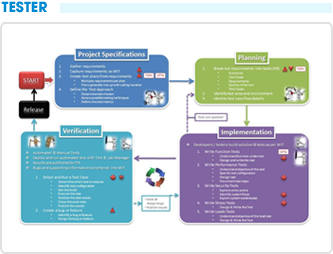024 38560777
Multiplication (Toán tử nhân (a*b))
Phép nhân là phép tính toán học của dãn số bởi số khác. Nó là một trong 4 phép tính cơ bản của số học (cộng, trừ, chia). Phép này tác động tới hai hay nhiều đối tượng toán học (thừa số, còn gọi là nhân tử) để tạo ra một đối tượng toán học mới. Ký hiệu của phép nhân là "×" (ngắn gọn hơn là "."). Vì nó là kết quả của dịch vị của toàn bộ số nên có thể nghĩ như nó chứa một vài bản của gốc, toàn bộ số sẽ sản sinh ra số lớn hơn một có thể tính tổng của một vòng lặp; ví dụ, ta lấy một số cộng với nhiêu số như 3+3+3+3 thì ra được 12. Khi ta sử dụng nhân thì nó sẽ nhanh hơn: 3 X 4. Phép nhân có thể nhân cho nhiều số chẳng hạn: 3 X 4 X 6 = 72.
Với dòng số trên ta có thể suy luận là Nếu ta lấy 3 X 4 thì ra 12, từ số ấy ta nhân 6 thì ra 72. Các con số trong phép nhân cũng có tên gọi của nó: Số nhân với các số khác ra kết quả gọi là Thừa số, kết quả là tích. Phép nhân là phép ngược lại của phép chia, được coi là phép để tìm số bị chia.
By English
Multiplication (often denoted by the cross symbol "×") is the mathematical operation of scaling one number by another. It is one of the four basic operations in elementary arithmetic (the others being addition, subtraction and division).
Because the result of scaling by whole numbers can be thought of as consisting of some number of copies of the original, whole-number products greater than 1 can be computed by repeated addition; for example, 3 multiplied by 4 (often said as "3 times 4") can be calculated by adding 4 copies of 3 together: 3 * 4 = 3 + 3 + 3 + 3 = 12. Here 3 and 4 are the "factors" and 12 is the "product".
Educators differ as to which number should normally be considered as the number of copies, and whether multiplication should even be introduced as repeated addition. For example 3 multiplied by 4 can also be calculated by adding 3 copies of 4 together: 3 * 4 = 4 + 4 + 4 = 12.
Multiplication of rational numbers (fractions) and real numbers is defined by systematic generalization of this basic idea. Multiplication can also be visualized as counting objects arranged in a rectangle (for whole numbers) or as finding the area of a rectangle whose sides have given lengths (for numbers generally). The area of a rectangle does not depend on which side you measure first, which illustrates that the order numbers are multiplied together in doesn't matter.
Like Doanh nhân số







































